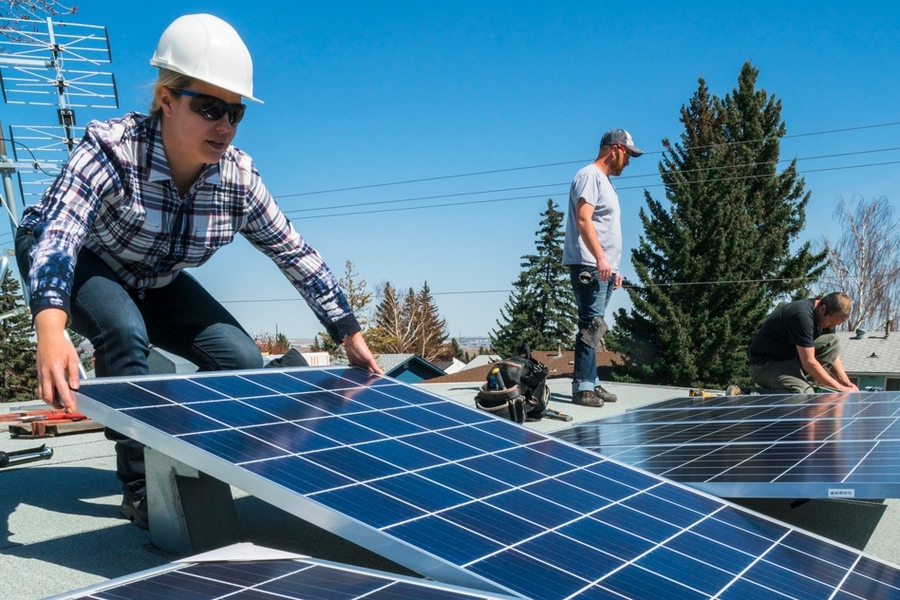Table of Contents
And Why it is so Important?
Solar energy is the tremendous amount of energy that the sun emits every day. And the amount of solar energy that we receive from the sun in a single day is more than the entire planet uses in a year. This energy is a natural source of power because it comes from the sun itself.
Solar Energy
Solar energy uses the sun’s radiant light and heat to power a variety of ever-evolving technologies such as solar heating, photovoltaics, solar thermal energy, solar architecture, molten salt power plants, and artificial photosynthesis. And If we can harness solar energy to its full potential, we will be able to meet all of the world’s energy needs in the future.
Solar energy is renewable because its source is inexhaustible, and it is also non-polluting. Additionally, solar energy will be a direct substitute for finite fossil fuels like coal, petroleum, and natural gas. More so, the sun is a potent source of energy. That makes sunlight the most abundant source of energy received by the earth. And that is why solar energy is free, but collecting, converting, and storing it is expensive. So it cannot be affordable for everyone. However, it is safe to say that it is a much better form of energy and is forever.
Solar and the Sun?
The sun is a ball of energy that is probably the cleanest and most abundant energy source on the planet. In layman’s terms, solar energy is the energy or heat that we receive from the sun.
And it is the type of energy necessary for the survival of plants, humans, and all other living things. Especially when we will run out of fossil fuel reserves. Therefore, people can now make the best use of renewable energy sources. Sources, such as solar, are indeed great alternatives. In particular for the environmentally vulnerable regions such as South Asia. The majority of the Indian subcontinent, the most vulnerable because of climate change, can now receive sunlight for nearly 300 days out of the year.
Humans can now generate electricity using naturally available sunlight thanks to the use of solar panels.
Since the sun, like other stars, is a giant gaseous ball made mostly of helium and hydrogen. Additionally, thanks to atomic fusion. Which is the process in which the sun generates energy in its inner core.
How Does Energy Travel from The Sun to The Earth?
After that, the energy from the sun travels 93 million kilometres to earth in slightly over eight minutes. The speed of light, or 186,000 miles per second, or 3.0 x 108 metres per second, is what solar energy travels. Whereas only a tiny portion of the sun’s visible radiant energy (light) ever reaches the earth. But it is more than enough to provide all of our energy demands.
Potential of Solar Energy
We can convert solar energy to either thermal or electrical energy. And to do that we need Flat-plate collectors. Whose essential function is to capture solar energy and convert it to thermal energy. Besides, flat-plate collectors can be used for solar heating, which is necessary for smart cities projects in the future. But the intensity of solar radiation on earth is low. And there are two reasons for this. First, the earth’s atmosphere and clouds absorb or scatter half of the energy that the world can receive. Also, the solar radiation intensity is low because the area of flat-plate collectors is not large enough to capture enough radiation. But with the changes in the current infrastructure. We can generate more power which will be more than enough for the entire world.
We Consume Little to No Solar Energy Despite Its Potential
Likewise, enough solar energy reaches the earth every hour to meet our country’s annual energy needs! And because of this, solar energy is a renewable energy source. As a result, we use solar energy to heat buildings, provide water, and generate power. Ironically, solar energy makes up less than 1% of total energy use in the United States. Therefore, it is a pity. Despite the potential that solar power has, it is being underutilized.
Solar Energy is Good for the Environment.
Unlike traditional sources of energy, produces no significant emissions or air pollution:
- It is a plentiful, clean, and renewable energy source.
- Solar energy has been sufficient to meet the world’s energy needs for millions of years. Because it emits no harmful gases or smoke, this clean energy source helps reduce the world’s carbon footprint.
- A solar power system is a long-term investment that will reduce your electricity bills.
As a result, you can even eliminate your electricity bills with grid-connected solar systems.
The Greenhouse Gases Problem and the Solar Energy
Luckily, solar energy emits no greenhouse gases. And it also keeps the ocean from freezing and propels currents. Solar power is excellent for the planets, forests and jungles as plants require solar energy to photosynthesize. Which is the process by which a plant produces food for itself and the other living creatures. Plants absorb sunlight through their leaves.
Furthermore, solar energy is crucial because if the sun did not provide us with energy, our planet would be too cold to live in. And the earth would be devoid of all living things. Hence, solar energy is the most potent and abundant source of energy available today. It will always be an infinite source of energy. The great thing about solar energy is that it is renewable. The exact amount of energy is always available, regardless of how much we use.


